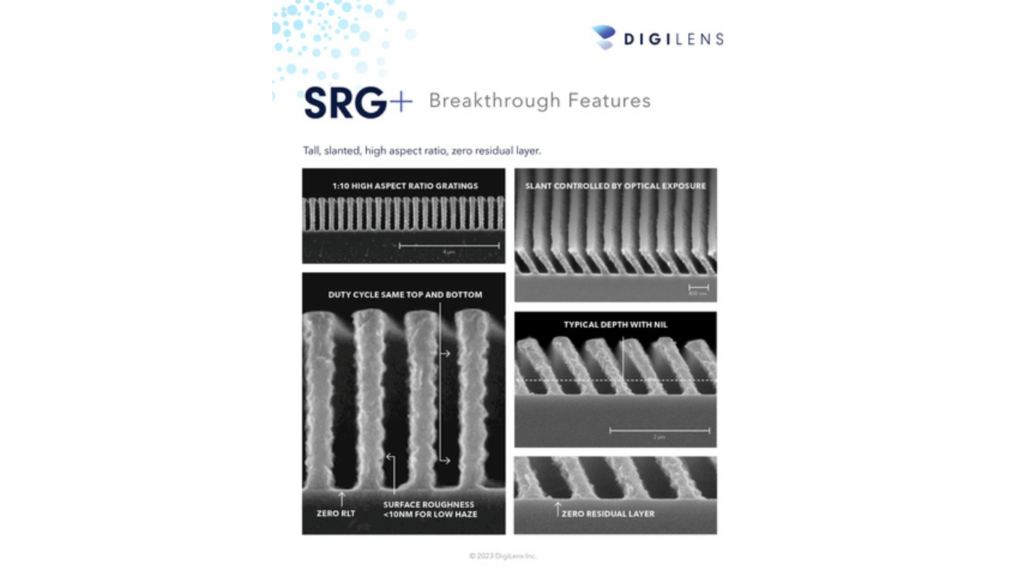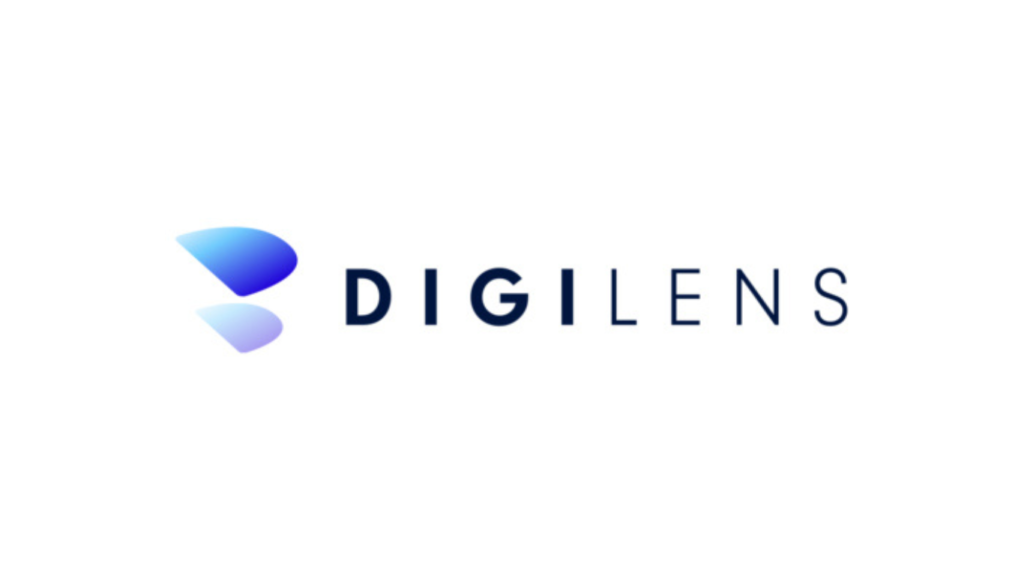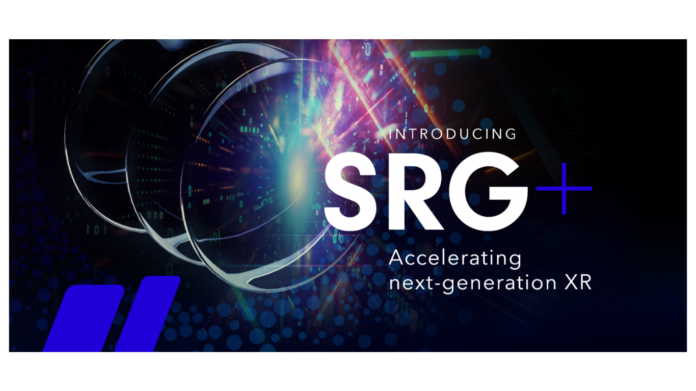DigiLens Inc., a global leader in waveguide technology, is proud to announce the launch of SRG+, the next level of surface relief gratings (SRG) that advances DigiLens’ current industry-leading volume Bragg gratings (VBG) with improved efficiency, uniformity, increased field of view, and compact form factor — all at a low price point, and with the ability to mass produce efficiently.
The SRG+ process is an extension of DigiLens’ well-established VBG technology. It results in an SRG structure that has no residual bias layer and best-in-class control over the creation of grating angles leading to industry-leading efficiency and minimal eye glow. This enables the highest-performing and most socially acceptable waveguide displays at a consumer price point.

Dr. Bernard Kress, president of SPIE, the international society for optics and photonics, said, “Over the past 50 years, Moore’s law pushed for successive IC fab technology revolutions. Over the past two decades, nanoImprint lithography (NIL) has been a great tool for 3D nanostructure replication, and resonated well with the Wafer Level Optics industry, providing new opportunities from Metalenses to AR waveguide gratings. The need for costly 3D etched masters has been a limitation for its adoption in consumer goods production, especially when the number of AR waveguides is low. With new challenges arising, such as higher aspect ratio high slant nanostructures without any residual layers over large areas, the industry is left with very few options. I am excited about DigiLens’ recent SRG+ developments, which provide a new, low-cost replication technology satisfying such drastic nanostructure requirements. The AR waveguides field is the tip of the iceberg as such novel nanostructures and related cost models create new design and application opportunities ranging from biotechnology to quantum and beyond.”

Features of SRG+ include – Higher delta-n (Higher diffraction efficiency and wider angular response); S&P polarization (Ideal for microLED); No bias layer (Wider angle response with high index glass); Tall gratings (Gratings several microns in height with high >10:1 aspect ratios); Higher efficiency (Brighter/longer battery life); Wider field of view (Improved AR experience); Lighter weight (Fewer waveguides); Smaller footprint (Lighter/easier to style); Lower cost (Much lower cost of masters needed for manufacturing); High-performance plastic (Safer/lighter weight); Fast ramp-up to volume manufacturing (Simple manufacturing processes and fast cycle time for design optimization and waveguide manufacturing).

“With SRG+, we’ve unlocked the challenges associated with conventional surface relief gratings such as those made by NIL techniques, reaching unprecedented structure heights of many microns and aspect ratios that exceed 10:1, while retaining the low-cost manufacturing methodologies that underpin DigiLens’ technology,” says Alastair Grant, senior vice president of optical engineering, DigiLens Inc.

“Having a high-aspect ratio and no bias layer enables reduced stray light and higher efficiency, which can lead to improved performance of lightguide eye-pieces that enhance visual instruction and training to optimize workforce performance,” said Dave Velasquez, Vice President and General Manager, Corning® Gorilla® Glass. Corning Incorporated joined DigiLens’ Series D funding round as an investor in 2022. “There’s exciting potential for SRG+ to deliver these important attributes for the future of AR technology.”
To learn more about the happenings in the optics and photonics industry, please check:
Kyndryl and Nokia expand global Network plus Edge Alliance
AdValue Photonics appoints Michael Mielke as CEO
Talend acquires Gamma Soft to bolster cloud migration and real-time analytics






